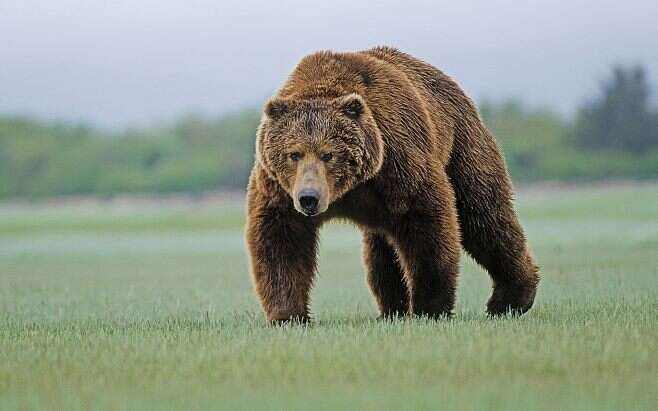Ursus arctos
IUCN
LCBasic Information
Scientific classification
- name:Ursus arctos
- Scientific Name:Brown bear, Grizzly bear
- Outline:Carnivora
- Family:Carnivora Ursidae Ursus
Vital signs
- length:1.5-2.8 m
- Weight:80-600 kg
- lifetime:20-30 year
Feature
One of the largest land mammals of the order Carnivore.
Distribution and Habitat
Brown bears are mainly distributed in northern Eurasia and most of North America. The habitat of brown bears is very wide, from the edge of the desert to the alpine forests and ice and snow. Their basic requirement for a habitat is to have a cover that can provide shelter during the day.
Appearance
Brown bears are one of the largest mammals of the order Carnivora on land, with a body length of 1-2.8 meters, a tail length of 6.5-2.1 centimeters, and a shoulder height of 0.9-1.5 meters; weight varies from 80-600 kilograms, with males weighing 135-600 kilograms and females weighing 160-500 kilograms. Male brown bears are 1.5-2 times the size of females. The heaviest Kodiak brown bear can reach 800 kilograms and can reach a height of 2.5 meters when standing upright. The lightest Syrian brown bear weighs only 90 kilograms. On average, adult males are 8-10% larger than females. Brown bears on the southern coast of Alaska and nearby islands are the largest bears of all subspecies, with an average weight of 389 kilograms for males and 207 kilograms for females, although some males weigh up to 780 kilograms. The distance between canine teeth is 6-8 centimeters. The northern and eastern subspecies decrease in size rapidly, with individuals in the southwestern Yukon Territory of Canada ave
Details
Brown bears are sometimes called "bruin" from Middle English. The name originates from William Caxton's fable History of Reynard the Fox, from the Middle Dutch word "bruun" or "bruyn", meaning brown (color). In the mid-19th century, brown bears were called "Old Ephraim" and sometimes "Moccasin Joe". The scientific name of the brown bear, "Ursus arctos", is derived from the Latin "ursus" (meaning "bear") and also from the Greek "bearρκτοςarktos".

Bear children are real. Some people in the fighting nation of Russia have brown bears. In Russia, a bear named Stepan was raised by an ordinary family when he was 3 months old. Now he is 25 years old. He watches TV with his owner at night and helps water the garden. He likes to hug people and has never bitten anyone. But wild brown bears are also very dangerous. On the Internet, we often see various short stories about Russians playing with brown bears with bare hands, or even bullying brown bears. As these stories spread more and more widely, they have become household names, and many passers-by believe them to be true. This is actually not conducive to the public's understanding of the dangers of large predators such as brown bears. Has the brown bear, a predatory beast, really fallen to the point of being bullied by humans with bare hands? In fact, on the contrary, Russia is one of the countries in the world where brown bears attack people most frequently.
Some biologists say that the power of a brown bear of average height using its palm to deliver a full-strength blow is about 1,600 kg. From this data, people can judge that the power of a brown bear's palm is very large. Compared with human power, the power of a punch by boxing champion Tyson at his peak was about 500 kg, and the power of a brown bear is obviously several times that of Tyson. From such a comparison, people can see that the power of a brown bear is very terrifying.
Due to their size and aggressiveness to threats, brown bears are generally not preyed on. But throughout history, humans have been the natural enemies of brown bears. Some brown bear cubs may be attacked by other brown bears, cougars or gray wolves, although this is very rare.
Listed in the IUCN Red List of Threatened Species in 2016 ver3.1 - Least Concern (LC).
Listed in Appendices I, II and III of the Convention on International Trade in Endangered Species of Wild Fauna and Flora (CITES) 2019 Edition, Himalayan brown bears, Tibetan brown bears, Ussuri brown bears and Mexican grizzly bears are listed in Appendix I; the remaining brown bear subspecies are listed in Appendix II.








